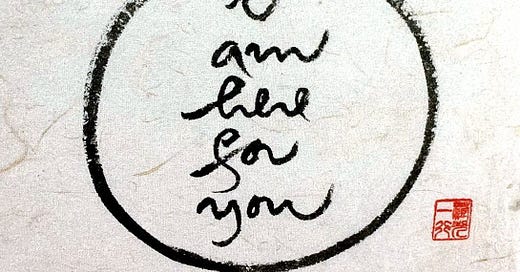Real Self Care
Faux self care vs real self care, Eudaimonic vs Hedonic well-being and a cozy clay creator.
It’s that time! I’m happy you’re here and deeply grateful to you for being a paid subscriber. It means you’re directly supporting me and my work and that means the world. Alright! Monday private post here. we. go
I recently listened to this episode of The Ezra Klein Show, “Boundaries, Burnout and the “Goopification” of Self-Care, and thought it would be a great thing to share with you all in this week’s substack.
The podcast features a discussion between writer and sociologist Tressie McMillan Cottom and Dr. Pooja Lakshmin, a psychiatrist who specializes in women’s health, who draws on case studies from her practice and research to explain why burnout and the “self-care” practices offered to us (particularly to women) in order to fix burnout aren’t working.
Burn-out is included in the 11th Revision of the International Classification of Diseases (ICD-11) as an occupational phenomenon. It is not classified as a medical condition. Burn-out is defined in ICD-11 as follows:
“Burn-out is a syndrome conceptualized as resulting from chronic workplace stress that has not been successfully managed. It is characterized by three dimensions:
feelings of energy depletion or exhaustion;
increased mental distance from one’s job, or feelings of negativism or cynicism related to one's job; and
reduced professional efficacy.
Burnout is so often described in media and even in passing conversations as a personal experience, putting the onus and burden on the individual rather than exploring how our social and political environments create conditions for burnout which the IDC classifies as a result of environmental conditions and “chronic workplace stress.”
In this podcast eps, Dr. Pooja Lakshmin states that if we think about self-care as something threaded through all the decisions in our lives rather than a task to check off a list (a bath or journaling) or something to purchase outside ourselves (a spin class, crystals, or a massage) it will ultimately be more sustainable and “real.”
I was struck by the idea Dr. Pooja Lakshmin shares about real self-care involving awareness of the seasons of our lives. She states that real self-care requires us to deconstruct our lives and realign ourselves with our own values, which are often subversive to the culture. She rightly credits black queer activists, thinkers, and luminaries like Audre Lorde and Bell Hooks who put these ideas of self-care as self-preservation into the cultural conversation. There is, after all, a survival aspect to self-care.
Dr. Pooja Lakshmin identifies four pillars of real self-care as follows. I’d recommend listening to the full podcast eps as she goes into great detail but below are a few takeaways for each pillar described.
Boundaries
Take a pause before responding, say “yes”, say “no” (acknowledge there is a cost) or negotiate. Threading boundaries throughout our lives in small and big ways.
Compassion + Self Compassion
A sense of kindness, cherishing, speaking kindly to ourselves and others. Acknowledging the suffering of others and connection to others as an aspect of well-being.
Below is a great video of Kristin Neff, the world's leading researcher of self-compassion and founder of the Mindful Self-Compassion program explaining the core features of self-compassion.
Values
Defined as “the regard that something is held to deserve; the importance, worth, or usefulness of something.” Or “a person's principles or standards of behavior; one's judgment of what is important in life.”
For example, do I value unchecked consumerism? Do I value community? Values are dialectic. Dancing between individuals having agency and the government enacting “top-down” solutions.
Power
When you decide to make choices based on your values, not society’s values it’s both powerful, empowering, and subversive.
I find it helpful to remember that faux self-care examples consist of tools often sold to us by wellness influencers, celebrities, and wealthy mostly white women with lifestyle brands. These tools include journaling, spa days, wellness retreats, charcoal-activated almonds, spin classes, and walks. It’s wonderful if you can afford them or have the ability to schedule them into your day but these are actually tools that may or may not be accessible given a myriad of things. Real self-care, is a principle that doesn’t require purchasing power. It does however require discipline, intentionality, and living in/with discomfort. It’s challenging to keep ourselves accountable to our self-care when it comes to respecting our boundaries, nourishing our compassion, and aligning ourselves and our lives with our values and our power.
Real self-care is about making the choices that align us with our Eudaimonic well-being rather than our Hedonic well-being. This aligns us with our power.
Eudaimonic well-being refers to the subjective experiences associated with eudaimonia or living a life of virtue in pursuit of human excellence. The phenomenological experiences derived from such living include self-actualization, personal expressiveness, and vitality.
Hedonic well-being, by contrast, is usually discussed in terms of experiences, a focus on desire fulfillment and pleasure-seeking, and the presence of positive affects and the absence of negative ones. In other words, hedonic happiness is about maximizing pleasure and minimizing displeasure.
So much to ponder!
Keep reading with a 7-day free trial
Subscribe to GIVE ME MORE by Jessie Barr to keep reading this post and get 7 days of free access to the full post archives.




